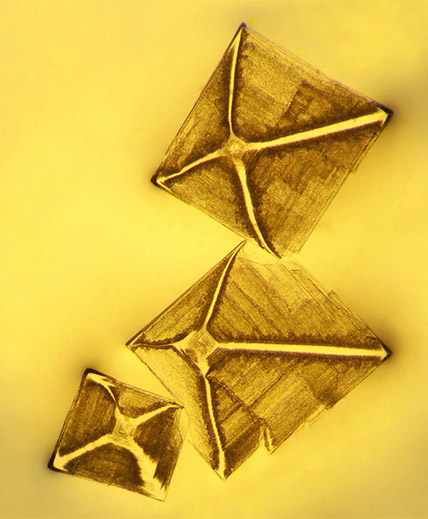
List of microsymposia:
Chairs:
+ Dr. Helen Ginn (Diamond Light Source Ltd., United Kingdom)
+ Dr. Thomas White (Deutsches Elektronen-Synchrotron DESY, Germany)
Chairs:
+ Dr. William Shepard (Synchrotron SOLEIL, France)
+ Dr. Katherine McAuley (Diamond Light Source, United Kingdom)
Chairs:
+ Dr. Martin Walsh (Diamond Light Source, United Kingdom)
+ Dr. Victor Lamzin (European Molecular Biology Laboratory, Germany)
Chairs:
+ Prof. Andrzej M. Brzozowski (The University of York, United Kingdom)
+ Dr. Pavlina Rezacova (Institute of Organic Chemistry and Biochemistry, Czech Academy od Sciences, Czech Republic)
Chairs:
+ Dr. Rob van Montford (The Institute of Cancer Research, United Kingdom)
+ Prof. Andreas Heine (Philipps University Marburg, Germany)
Chairs:
+ Prof. Guillermo Montoya (Novo Nordisk Foundation Center for Protein Research. Faculty of Health and Medical Sciences, University of Copenhagen, Denmark)
+ Prof. Kristina Djinovic Carugo (University of Vienna, Austria)
Chairs:
+ Prof. Ralf Ficner (University Goettingen, Germany)
+ Prof. Markus Wahl (Freie Universität Berlin, Germany)
Chairs:
+ Prof. Susanna Törnroth-Horsefield (Lund University, Sweden)
+ Prof. Adrian Goldman (University of Helsinki/University of Leeds , United Kingdom)
Chairs:
+ Prof. Leila Lo Leggio (University of Copenhagen, Denmark)
+ Dr. Dusan Turk (Jozef Stefan Institute, Slovenia)
Chairs:
+ Prof. Marta E. G. Mosquera (University of Alcala, Spain)
+ Dr. Matthew Blakeley (Large-Scale Structures Group, Institut Laue-Langevin, France)
Chairs:
+ Prof. Maria Joao Romao (FCT- NOVA University of Lisbon, Portugal)
+ Prof. Fred Antson (University of York, United Kingdom)
Chairs:
+ Claudia Lucía Millán Nebot (Institut de Biologia Molecular de Barcelona (IBMB-CSIC), Spain)
+ Dr. Daniel Rigden (Institute of Integrative Biology, University of Liverpool , United Kingdom)
Chairs:
+ Dr. Catherine Dejoie (ESRF, France)
+ Prof. Giuseppe Cruciani (University of Ferrara, Italy)
Chairs:
+ Prof. Joke Hadermann (University of Antwerp, Belgium)
+ Dr. Phillipe Boullay (CRISMAT (Caen) - CNRS , France)
Chairs:
+ Dr. Anna Pakhomova (Deutsches Elektronen Syncrotron, Germany)
+ Prof. JuanMa García-Ruiz (LEC, CSIC, Spain)
Chairs:
+ Dr. Oleg Siidra (Saint-Petersburg State University, Russia)
+ Dr. Claire Colin (Institut Néel, CNRS & UGA, France)
Chairs:
+ Prof. Wolfgang Schmahl (LMU Munich, Germany)
+ Dr. Anna Schenk (University of Bayreuth, Germany)
Chairs:
+ Dr. Damian Paliwoda (Lehigh University, United States of America)
+ Dr. Ines Collings (European Synchrotron Radiation Facility, France)
Chairs:
+ Dr. Klaudia Hradil (TU Wien, X-ray center, Austria)
+ Dr. Claudia Weidenthaler (Max-Planck-Institut für Kohlenforschung, Germany)
Chairs:
+ Dr. Karine Röwer (Crelux GmbH, Germany)
+ Dr. Loes Kroon-Batenburg (Utrecht University, Netherlands)
Chairs:
+ Prof. Enrique Espinosa (University of Lorraine, France)
+ Prof. Ulli Englert (RWTH Aachen University, Germany)
Chairs:
+ Dr. Vladimir Stilinovic (University of Zagreb, Croatia)
+ Dr. Jacob Overgaard (Aarhus University, Denmark)
Chairs:
+ Dr. Mariana Klementova (Institute of Physics of the Czech Academy of Sciences, Czech Republic)
+ Dr. Enrico Mugaioli (Istituto Italiano di Tecnologia, Italy)
Chairs:
+ Dr. Partha Pratim Das (NanoMEGAS SPRL, Belgium)
+ Dr. Tatiana Gorelik (University of Ulm, Germany )
Chairs:
+ Prof. Artem Abakumov (Skolkovo Institute of Science and Technology, Russia)
+ Prof. Radovan Cerny (University of Geneva, Switzerland)
Chairs:
+ Prof. Sven Lidin (Lund University, Sweden)
+ Prof. Alla Arakcheeva (École Polytechnique Fédérale de Lausanne (EPFL), Switzerland)
Chairs:
+ Prof. Marc de Boissieu (CNRS, Univ. Grenoble Alpes, SIMAP, France)
+ Prof. Janusz Wolny (AGH University of Science and Technology, Faculty of Physics and Applied Computer Science, Poland)
Chairs:
+ Dr. Francoise Damay (Laboratoire Leon Brillouin, France)
+ Prof. José L. García-Muñoz (Institut de Ciència de Materials de Barcelona - CSIC, Spain)
Chairs:
+ Prof. Berthold Stöger (X-Ray Centre, TU Wien, Austria)
+ Prof. Bernd Souvignier (Radboud University, Netherlands)
Chairs:
+ Dr. Guillermo Minguez (Instituto de Ciencia Molecular, Spain)
+ Prof. Giuseppe Resnati (NFMLab, DCMIC, Politecnico di Milano, Italy)
Chairs:
+ Dr. Laszlo Fabian (University of East Anglia, United Kingdom)
+ Prof. Mino R. Caira (University of Cape Town, South Africa)
Chairs:
+ Dr. Berta Gómez-Lor (Instituto de Ciencia de Materiales de Madrid, Spain)
+ Prof. Delia Haynes (Stellenbosch University, South Africa)
Chairs:
+ Dr. Jacco van de Streek (Avant-garde Materials Simulation, Germany)
+ Dr. Aurora Cruz-Cabeza (University of Manchester, United Kingdom)
Chairs:
+ Dr. Pance Naumov (New York University Abu Dhabi, United Arab Emirates)
+ Prof. Leonard Barbour (University of Stellenbosch, South Africa)
Chairs:
+ Dr. Felipe Gandara (Instituto de Ciencia de Materiales de Madrid - CSIC, Spain)
+ Prof. Wendy Queen (EPFL, Switzerland)
Chairs:
+ Dr. Attila Benyei (University of Debrecen, Hungary)
+ Prof. Alessandra Crispini (Direttore del Dipartimento di Chimica e Tecnologie Chimiche, Università della Calabria, Italy)
Chairs:
+ Dr. Hamish Yeung (University of Oxford, United Kingdom)
+ Dr. Tomislav Friščić (McGill University, Canada)
Chairs:
+ Dr. Gergely Katona (University of Gothenburg, Sweden)
+ Dr. Ullrich Pietsch (University of Siegen, Germany)
Chairs:
+ Dr. Rainer Timm (Lund University, Sweden)
+ Prof. Jordi Arbiol (ICREA and Institut Català de Nanociència i Nanotecnologia (ICN2), CSIC and BIST, Spain)
Chairs:
+ Prof. Bernhard Spingler (University of Zurich, Switzerland)
+ Prof. Terese Bergfors (Uppsala University, Sweden)
Chairs:
+ Dr. Marijana Dakovic (University of Zagreb, Croatia)
+ Dr. Martin Lutz (Utrecht University, Netherlands)
Chairs:
+ Prof. Isabel Usón (ICREA at SBU, IBMB-CSIC, Spain)
+ Dr. Tom Burnley (STFC, United Kingdom)
Chairs:
+ Prof. Patrick McArdle (NUI, Galway, Ireland)
+ Prof. Vladislav Blatov (SCTMS at Samara University, Russia)
Chairs:
+ Prof. Simona Galli (University of Insubria, Italy)
+ Dr. Gavin Vaughan (ESRF, France)
Chairs:
+ Dr. Julia Contreras (CNRS-SORBONNE UNIVERSITY, France)
+ Dr. Annalisa Guerri (University of Florence - Department of Chemistry, Italy)
Chairs:
+ Prof. Carlo Mealli (CNR Florence (retired), Italy)
+ Prof. Sine Larsen (University of Copenhagen, Denmark)
Chairs:
+ Dr. Andrew Maloney (The Cambridge Crystallographic Data Centre, United Kingdom)
+ Dr. Chiara Massera (University of Parma , Italy)
Chairs:
+ Prof. Mike Glazer (Oxford University, United Kingdom)
+ Dr. Aleksandar Višnjevac (Institut Ruđer Bošković, Croatia)